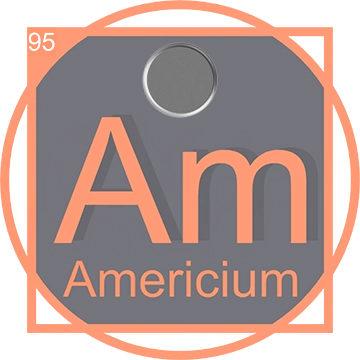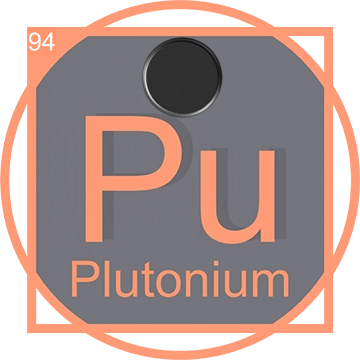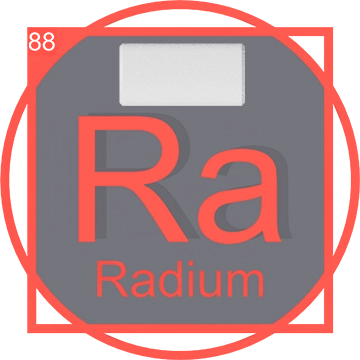Americium (Am) - Unveiling the Mysteries of a Radioactive Giant
Discover the history, uses, and scientific importance of Americium, a cornerstone in the field of nuclear science.
The Discovery of Americium
Americium (Am), a synthetic element, was first identified in 1944 by a group of talented researchers, including Glenn T. Seaborg, Albert Ghiorso, and their team at the University of Chicago. This groundbreaking discovery occurred during the Manhattan Project, marking a significant milestone in the annals of chemistry and nuclear physics. Named after America, Americium shines as a testament to human ingenuity in the exploration of the atomic realm.
Americium in the Periodic Table

Occupying position 95 in the periodic table, Americium is a member of the actinide series, characterized by its radioactive properties and position in the transuranic segment. With its unique set of chemical and physical characteristics, Americium plays a pivotal role in expanding our understanding of atomic science, influencing everything from nuclear research to practical applications in medical and industrial fields.
Scientific Significance and Uses
Americium's remarkable properties have paved the way for its use in a variety of applications that impact our daily lives and scientific advancements. One of its most well-known applications is in smoke detectors, where Americium-241, a specific isotope, serves as a critical component, saving countless lives through early fire detection. Furthermore, its application in nuclear batteries and radiography highlights the versatility and importance of this synthetic element in modern technology and healthcare.
Challenges and Safety

Handling Americium, like other radioactive materials, requires stringent safety measures to protect against its potential hazards. Its radiation poses risks that necessitate careful management and disposal to prevent environmental and health impacts. The scientific community continues to study Americium to understand its behavior and mitigate risks associated with its use and handling.
Looking to the Future
As research progresses, the potential for new and innovative uses of Americium expands. Scientists are exploring its application in space exploration, cancer treatment, and advanced nuclear reactors. The ongoing study of Americium not only deepens our understanding of the atomic world but also opens new horizons for scientific discovery and technological innovation.
Join us in exploring the fascinating world of Americium and its contributions to science and technology. For more information on Americium and other elements in the periodic table, please continue reading.
How Americium Is Produced

Americium is not found in nature but is produced in nuclear reactors. The most common isotope, Americium-241, is derived from the decay of plutonium-241, a process that occurs in nuclear reactors as plutonium absorbs neutrons. The production of Americium is a testament to human ingenuity in nuclear chemistry, showcasing our ability to create valuable elements from others in the periodic table.
Co-occurring Resources
While Americium itself is not mined, its parent materials, such as uranium and plutonium, are extracted from mines. Uranium mines, for example, are located worldwide, with notable examples in Canada, Australia, and Kazakhstan. Uranium often co-occurs with other elements such as radium, thorium, and rare earth elements, reflecting the complexity and richness of our planet's mineral resources.
Modern Applications of Americium

Today, Americium's most famous use is in smoke detectors, where its ability to ionize air plays a crucial role in detecting smoke and preventing fire hazards. Beyond safety applications, Americium-241 is also utilized in radiography to inspect welds and in density gauges to measure the flow of materials. Its role in science and technology continues to evolve, demonstrating the element's versatility and importance.
The Future of Americium
The potential future applications of Americium are as fascinating as its history. Scientists are exploring its use in space exploration, such as powering long-duration spacecrafts with Americium-based nuclear batteries. Research is also underway to leverage its properties for targeted cancer treatments, offering hope for breakthroughs in medical science. As our understanding of Americium expands, so too does its potential to contribute to advancements across a broad spectrum of disciplines.














